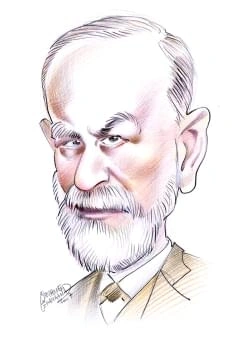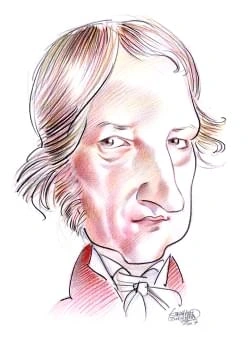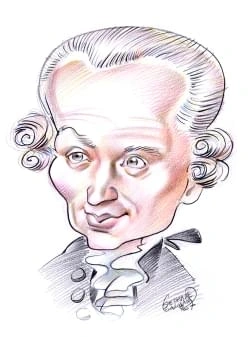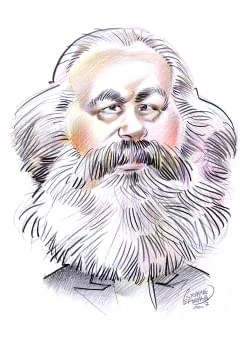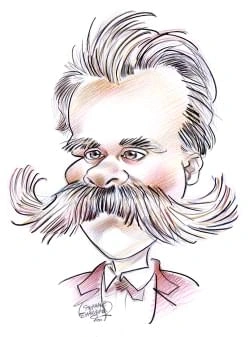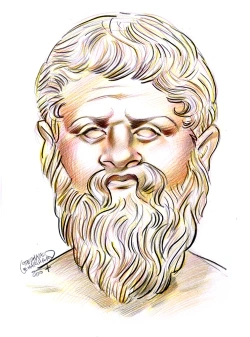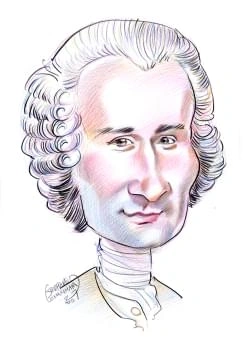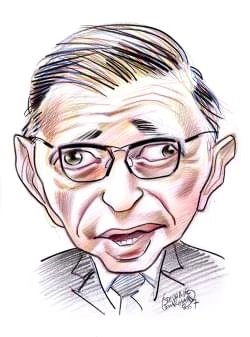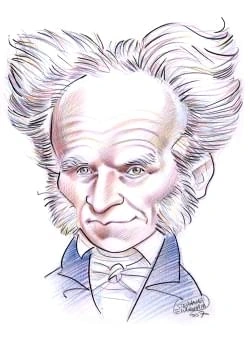193 résultats pour "winter"
-
Nebraska - USA History.
by natural resource districts to limit the rate of pumping for irrigation. C Climate Nebraska has a typical continental climate with wide seasonal variations in temperature. C1 Temperature Winter temperatures below -20°C (0° F) and summer temperatures in the upper 30°s C (lower 100°s F) are common. The average January temperature varies from about -7° C (about 20° F) in the northeast to about -2° C (about 29° F) in the southwest. The average for July, thehottest month, ranges from about 26° C...
-
Argentina - country.
Patagonia lies in the rain shadow of the Andes and so receives little moisture. As a result it is used primarily for grazing sheep, although some crops are grown on smallfarms in irrigated valleys. Several major oil fields also are in Patagonia. At the southern tip of Patagonia is Tierra del Fuego, a large mountainous island shared byArgentina and Chile. B Rivers and Lakes Most of Argentina’s rivers empty into the Atlantic Ocean. Three rivers—the Paraná, Paraguay, and Uruguay—flow generally sou...
-
Arkansas - geography.
temperature rises to the upper 30°s C (lower 100°s F). C2 Precipitation Arkansas receives about 1,000 to 1,300 mm (about 40 to 50 in) of precipitation a year, and some areas receive even more. Most of the rain comes during winter andspring and at times is so heavy as to cause flooding. Snow is rare in the south but amounts to more than 250 mm (10 in) a year in the mountains. C3 Growing Season Arkansas has a long growing season. It averages 211 days for the state as a whole and ranges from 241...
-
Arkansas - USA History.
temperature rises to the upper 30°s C (lower 100°s F). C2 Precipitation Arkansas receives about 1,000 to 1,300 mm (about 40 to 50 in) of precipitation a year, and some areas receive even more. Most of the rain comes during winter andspring and at times is so heavy as to cause flooding. Snow is rare in the south but amounts to more than 250 mm (10 in) a year in the mountains. C3 Growing Season Arkansas has a long growing season. It averages 211 days for the state as a whole and ranges from 241...
-
Indiana - geography.
Michigan in Michigan. There are about 1,000 small natural lakes in Indiana, chiefly in the northern part of the state. The largest is Lake Wawasee, which covers almost 13 sq km (5 sq mi). Inthe central part of the state there are several lakes that were created behind dams on a number of smaller streams. They include Monroe Lake, near Bloomington; Geistand Eagle Creek reservoirs, northeast and northwest of Indianapolis; and Mississinewa and Huntington reservoirs, north of Marion. C Climate Most...
-
Indiana - USA History.
Michigan in Michigan. There are about 1,000 small natural lakes in Indiana, chiefly in the northern part of the state. The largest is Lake Wawasee, which covers almost 13 sq km (5 sq mi). Inthe central part of the state there are several lakes that were created behind dams on a number of smaller streams. They include Monroe Lake, near Bloomington; Geistand Eagle Creek reservoirs, northeast and northwest of Indianapolis; and Mississinewa and Huntington reservoirs, north of Marion. C Climate Most...
-
Georgia (state) - geography.
B Rivers and Lakes Most of the rivers of Georgia drain eastward to the Atlantic Ocean proper or southward to the Gulf of Mexico. Only a few flow northward to the Tennessee River, which isa major tributary of the Mississippi River. Most of the rivers flowing to the coasts are navigable by barges and small craft as far upstream as the Fall Line. The major river flowing to the Atlantic is the Savannah River, which, with the Tugaloo River, one of its headwaters, forms most of the state’s eastern bo...
-
Georgia (state) - USA History.
B Rivers and Lakes Most of the rivers of Georgia drain eastward to the Atlantic Ocean proper or southward to the Gulf of Mexico. Only a few flow northward to the Tennessee River, which isa major tributary of the Mississippi River. Most of the rivers flowing to the coasts are navigable by barges and small craft as far upstream as the Fall Line. The major river flowing to the Atlantic is the Savannah River, which, with the Tugaloo River, one of its headwaters, forms most of the state’s eastern bo...
-
-
Florida - USA History.
accidentally introduced into the region in the 1880s, and it spread with alarming rapidity throughout the upper reaches of the river. The plant is very difficult toeradicate, and it has also clogged the channels of other Florida rivers. To increase drainage of the Everglades, which drain naturally to Florida Bay and the Gulf ofMexico, a number of drainage channels and canals have been built across southern Florida. Among the rivers flowing from the peninsula to the Gulf of Mexico are the Suwanne...
-
Arctic - Geography.
The Arctic is not a frozen desert devoid of life on land or sea, even during the cold, dark winter months. Spring brings a phenomenal resurgence of plant and animal life.Low temperatures are not always the critical element—moisture, the type of soil, and available solar energy are also extremely important. Some animals adapt well toArctic conditions; for instance, a number of species of mammals and birds carry additional insulation, such as fat, in cold months. Arctic summers with extended dayli...
-
Glacier.
covered. In spring the snow cover begins to melt in the lower reaches, exposing the ice surface. As temperatures increase, the melting moves up the glacier. Thesnowline is the highest position the melting reaches during the year. Firn is old granular snow. The firn limit may not exactly coincide with the annual snowline since insome years rapid melting leaves behind firn patches below the snowline. Some glaciers exhibit features called ice streams and icefalls. Ice streams are valley glaciers th...
-
Antarctica - geography.
The geographic South Pole lies near the center of the continent in East Antarctica. This point is where all map lines of longitude converge at the southern end ofEarth’s axis of rotation. Distinct from the geographic south pole is the south magnetic pole, where the lines of force of Earth’s magnetic field emerge vertically,arching upward over the planet to enter Earth again at the north magnetic pole. The south-seeking end of a compass needle points to the south magnetic pole. Thesouth magnetic...
-
Arktis - geographie.
2.5 Bevölkerung Lange bevor die Europäer die Arktis entdeckten, gab es dort in weiten Teilen des Landes eine verstreut lebende Bevölkerung. Nur Island stellte eine nennenswerteAusnahme dar. Die Ureinwohner gehörten zahlreichen ethnischen Gruppen an und bedienten sich verschiedener Sprachen; sie stammten jedoch alle ursprünglich aus Asien.Die Inuit (Eskimo) erreichten den Atlantischen Ozean im Osten Grönlands und die Lappen (Samen) gelangten nach Norwegen. In den Arktisregionen Russlands gibt es...
-
Horse - biology.
Horses reach sexual maturity at about one and a half years. The estrous cycle in the mare—a mature female horse—typically lasts 21 days. During the first five days ofthe cycle, the mare is usually receptive to mating. The estrous cycle stops during winter and resumes in the spring, which is the start of the breeding season. Astallion—a mature male horse—approaching a mare in estrus engages in various courtship rituals. These include uttering nickering sounds and sniffing and licking themare’s ge...
-
Newfoundland and Labrador - Geography.
Precipitation averages about 1,120 mm (about 44 in) yearly in Newfoundland. In Labrador precipitation varies from about 1,020 mm (about 40 in) in the southeast toabout 510 mm (about 20 in) in the extreme north. Heavy winter snowfalls are common, especially in Newfoundland. D Plant Life About one-third of Newfoundland is forested, and most of the rest of the island is made up of barren areas of reindeer moss and lichens. The forests consist almostentirely of conifers. The most important species...
-
Newfoundland and Labrador - Canadian History.
Precipitation averages about 1,120 mm (about 44 in) yearly in Newfoundland. In Labrador precipitation varies from about 1,020 mm (about 40 in) in the southeast toabout 510 mm (about 20 in) in the extreme north. Heavy winter snowfalls are common, especially in Newfoundland. D Plant Life About one-third of Newfoundland is forested, and most of the rest of the island is made up of barren areas of reindeer moss and lichens. The forests consist almostentirely of conifers. The most important species...
-
-
North Dakota - geography.
Bismarck, the growing season averages 134 days, as the average date of the last killing frost is May 11 and that of the first killing frost is September 22. The length ofthe growing season drops to about 110 days in the northerly reaches of the state. The long periods of summer sunshine at this latitude, providing as much as 16 hoursof daylight in summer, help crops to mature quickly, thus compensating somewhat for the relatively short growing season. Temperatures in the north are, on the averag...
-
North Dakota - USA History.
Bismarck, the growing season averages 134 days, as the average date of the last killing frost is May 11 and that of the first killing frost is September 22. The length ofthe growing season drops to about 110 days in the northerly reaches of the state. The long periods of summer sunshine at this latitude, providing as much as 16 hoursof daylight in summer, help crops to mature quickly, thus compensating somewhat for the relatively short growing season. Temperatures in the north are, on the averag...
-
Ohio - geography.
conflict with modified Gulf air and causing frontal or cyclonic storms. Gulf air is dominant in summer. In fall, polar air passing over Lake Erie is modified, delaying thekilling frost along the adjacent shoreline. C1 Temperatures The mean annual temperatures for the state range from 9° C (48° F) in the northeast to 13° C (55° F) in the south. Average January temperatures range from -4° C(24° F) in the west to 2° C (35° F) in the south. July averages are 24° C (76° F) in the south and 23° C (73...
-
Ohio - USA History.
conflict with modified Gulf air and causing frontal or cyclonic storms. Gulf air is dominant in summer. In fall, polar air passing over Lake Erie is modified, delaying thekilling frost along the adjacent shoreline. C1 Temperatures The mean annual temperatures for the state range from 9° C (48° F) in the northeast to 13° C (55° F) in the south. Average January temperatures range from -4° C(24° F) in the west to 2° C (35° F) in the south. July averages are 24° C (76° F) in the south and 23° C (73...
-
California - geography.
The Basin and Range province is an arid area of mountain ranges, basins, and deserts. In California it is represented primarily by parts of the Great Basin and SonoranDesert sections. Within the Great Basin lies Death Valley, whose lowest elevation, 86 m (282 ft) below sea level, is the lowest point in the Western Hemisphere. TheSonoran Desert section is characterized by numerous flat plains separated by low but rugged ranges. It includes the extensive Mojave, or Mohave, Desert. Also in thisprov...
-
California - USA History.
The Basin and Range province is an arid area of mountain ranges, basins, and deserts. In California it is represented primarily by parts of the Great Basin and SonoranDesert sections. Within the Great Basin lies Death Valley, whose lowest elevation, 86 m (282 ft) below sea level, is the lowest point in the Western Hemisphere. TheSonoran Desert section is characterized by numerous flat plains separated by low but rugged ranges. It includes the extensive Mojave, or Mohave, Desert. Also in thisprov...
-
Influenza.
days and disappear in seven to ten days. However, coughing and fatigue may persist for two or more weeks. Death from influenza itself is rare. But influenza can aggravate underlying medical conditions, such as heart or lung disease. Invading influenza viruses produceinflammation in the lining of the respiratory tract, damage that increases the risk that secondary infections will develop. Common complications include bronchitis,sinusitis, and bacterial pneumonia, occurring most frequently in olde...
-
Austria - country.
Wildlife is generally scarce in Austria. Chamois, deer, and marmot are still present; bear, which were once abundant, are now almost completely absent. Hunting isstrictly regulated to protect the remaining species. F Environmental Issues Industrial emissions, a high volume of tourist traffic, and significant air pollution from other countries—principally the former East Germany, Slovakia, and the CzechRepublic—combine to make acid rain the major environmental problem in Austria. One-quarter of...
-
-
Wisconsin (state) - geography.
-6° C (22° F) in the southeast, along the Lake Michigan shore. During winter extremely cold weather persists for several weeks at a time. C2 Precipitation Average annual precipitation ranges from 700 to 800 mm (28 to 32 in). Rainfall is generally heaviest during the spring and summer, and snowfall is generally moderatein the south, but can be quite heavy in the north. Thunderstorms, sometimes accompanied by devastating tornadoes, are common in spring and summer, particularly inthe southern part...
-
Wisconsin (state) - USA History.
-6° C (22° F) in the southeast, along the Lake Michigan shore. During winter extremely cold weather persists for several weeks at a time. C2 Precipitation Average annual precipitation ranges from 700 to 800 mm (28 to 32 in). Rainfall is generally heaviest during the spring and summer, and snowfall is generally moderatein the south, but can be quite heavy in the north. Thunderstorms, sometimes accompanied by devastating tornadoes, are common in spring and summer, particularly inthe southern part...
-
Washington (state) - geography.
The crest of the Cascade Range divides Washington into two distinct climatic regions. The area west of the Cascades, which is exposed throughout the year to rain-bearing winds from the Pacific Ocean, has a temperate marine type of climate that is characterized by mild wet winters and cool summers. The Cascades prevent themoist air blowing in from the Pacific from reaching eastern Washington. The Rocky Mountains on the eastern border also represent a climatic barrier. As a result, thesevere winte...
-
Washington (state) - USA History.
The crest of the Cascade Range divides Washington into two distinct climatic regions. The area west of the Cascades, which is exposed throughout the year to rain-bearing winds from the Pacific Ocean, has a temperate marine type of climate that is characterized by mild wet winters and cool summers. The Cascades prevent themoist air blowing in from the Pacific from reaching eastern Washington. The Rocky Mountains on the eastern border also represent a climatic barrier. As a result, thesevere winte...
-
Illinois - geography.
the state before joining the Mississippi River at Grafton. The Illinois has been deepened and straightened and forms part of the Illinois Waterway. The watershed between rivers that flow into the Mississippi river system and rivers that flow into the Great Lakes is low and in many places is not easily discernible. Inwhat is now the Chicago area, explorers had little difficulty portaging, or carrying, their canoes over the low watershed between the Des Plaines River, which flows intothe Illinois,...
-
Illinois - USA History.
the state before joining the Mississippi River at Grafton. The Illinois has been deepened and straightened and forms part of the Illinois Waterway. The watershed between rivers that flow into the Mississippi river system and rivers that flow into the Great Lakes is low and in many places is not easily discernible. Inwhat is now the Chicago area, explorers had little difficulty portaging, or carrying, their canoes over the low watershed between the Des Plaines River, which flows intothe Illinois,...
-
Bac anglais
12AN1LME1 Page : 2/4 Joseph Netmaker brought the letter out to me. Winter had just started to settle itself into the country. Joseph walked on snowshoes from the town. ‘This is for you, Niska,’ he said. ‘It is from the Canadian boss, their hookimaw.’ As soon as I saw the brown letter, the English words written upon it, I knew what it contained. I sat down beside the fire and stirred at it with a stick while Joseph read, first out 5 loud and in his stumbling English, then for me in our l...
-
Wayne Gretzky.
and 1991. He was captain of the national team for the 1996 World Cup and made his first Olympic Games appearance as a member of Canada’s ice hockey team duringthe 1998 Winter Games in Nagano, Japan. In 1999, just a few months after his retirement from the NHL, Gretzky was inducted into the Hockey Hall of Fame. The board of directors of the Hall of Fame waived thenormal three-year waiting period as a way of honoring Gretzky for all his contributions to the sport of hockey. Gretzky remained active...
-
-
Wayne Gretzky
I
INTRODUCTION
Wayne Gretzky, born in 1961, Canadian professional ice hockey player, nicknamed The Great One, who is the National Hockey League (NHL) career leader in goals,
assists, and points (goals and assists combined).
and 1991. He was captain of the national team for the 1996 World Cup and made his first Olympic Games appearance as a member of Canada’s ice hockey team duringthe 1998 Winter Games in Nagano, Japan. In 1999, just a few months after his retirement from the NHL, Gretzky was inducted into the Hockey Hall of Fame. The board of directors of the Hall of Fame waived thenormal three-year waiting period as a way of honoring Gretzky for all his contributions to the sport of hockey. Gretzky remained active...
-
Bonnie Blair Wins Six Olympic Medals.
For the final race, Blair was paired against a familiar foe—Ye of China. Wearing goggles, a blue hood, and a red, white, and blue uniform, Blair breezed to a course-record time of 1 minute 18.74 seconds. “I don't know if that's good enough,” she told coach Nick Thometz afterwards, according to Sports Illustrated. “But that's all I had.” Blair had more than enough, outracing both Germany's Anke Baier and Ye by nearly 1.5 seconds. She won her fifth gold medal. Blair's sixth career Olympic me...
-
Bac L anglais
12AN1LME1 Page : 2/4 Joseph Netmaker brought the letter out to me. Winter had just started to settle itself into the country. Joseph walked on snowshoes from the town. ‘This is for you, Niska,’ he said. ‘It is from the Canadian boss, their hookimaw.’ As soon as I saw the brown letter, the English words written upon it, I knew what it contained. I sat down beside the fire and stirred at it with a stick while Joseph read, first out 5 loud and in his stumbling English, then for me in our l...
-
Captain James Cook.
After leaving Tahiti, the expedition headed north into uncharted territory. After becoming the first Europeans to sight the Hawaiian Islands (which Cook named theSandwich Islands) in 1778, they sailed along the west coast of Canada and Alaska. Twice Cook explored inlets that offered some promise of a Northwest Passage, but tono avail. After sailing through the Bering Strait into the Arctic Sea and briefly scouting the Asian side of the strait, Cook decided to winter in the Hawaiian Islands. Hein...
-
Captain James Cook - explorer.
After leaving Tahiti, the expedition headed north into uncharted territory. After becoming the first Europeans to sight the Hawaiian Islands (which Cook named theSandwich Islands) in 1778, they sailed along the west coast of Canada and Alaska. Twice Cook explored inlets that offered some promise of a Northwest Passage, but tono avail. After sailing through the Bering Strait into the Arctic Sea and briefly scouting the Asian side of the strait, Cook decided to winter in the Hawaiian Islands. Hein...
-
Jacksonville (Florida) - geography.
and southern sections and avoiding the downtown bottleneck where Interstate 95 crosses the Saint Johns River at the Fuller Warren Bridge. In addition to being a regional highway crossroads, the city is a railway hub, with Amtrak passenger service and several freight routes. The city’s expanding airport,located in northern Jacksonville, was the nation’s fastest growing in passenger volume in the mid-1990s. V GOVERNMENT Jacksonville has a mayor-council form of municipal government. The mayor and...
-
Confederation of Canada - Canadian History.
Québec conference seemed in many ways to give Macdonald the centralized union he wanted. The federal government would control banking, finance, defense,transportation, and commerce among the provinces. It would also have far greater powers of taxation than the provincial governments would have. In private,Macdonald predicted that the central government would be so strong that it would soon swallow up the provinces completely. Yet the Québec resolutions were vague or contradictory enough to give...
-
Athlétisme (hommes) : palmarès JO.
1900 John WalterTewksbury(États-Unis) 22'2 Norman Pritchard(Inde) 22'8 Stanley Rowley(Australie) 22'9 1904 Archie Hahn(États-Unis) 21'6 NathanielCartmell(États-Unis) 21'9 WilliamHogenson(États-Unis) - 1908 Robert Kerr(Canada) 22'6 Robert Cloughen(États-Unis) 22'6 NathanielCartmell(États-Unis) 22'7 1912 Ralph Craig(États-Unis) 21'7 Donald Lippincott(États-Unis) 21'8 WilliamApplegarth(Grande-Bretagne) 22'0 1920 Allen Woodring(États-Unis) 22'0 Charles Paddock(États-Unis) 22'1 Harry Edward(...
-
-
Julius Caesar
I
INTRODUCTION
Julius Caesar (100-44
BC),
Roman general and statesman whose dictatorship was pivotal in Rome's transition from republic to empire.
V CROSSING THE RUBICON In 52 BC, with Crassus out of the way, Pompey was made sole consul. Combined with his other powers, this gave him a formidable position. Jealous of his younger rival, he determined to break Caesar’s power. To achieve this objective, he first needed to deprive Caesar of the forces he commanded in Gaul. Pompey ordered him toreturn to Rome without his troops. To protect himself, Caesar suggested that he and Pompey both lay down their commands simultaneously, but this propos...
-
Julius Caesar.
V CROSSING THE RUBICON In 52 BC, with Crassus out of the way, Pompey was made sole consul. Combined with his other powers, this gave him a formidable position. Jealous of his younger rival, he determined to break Caesar’s power. To achieve this objective, he first needed to deprive Caesar of the forces he commanded in Gaul. Pompey ordered him toreturn to Rome without his troops. To protect himself, Caesar suggested that he and Pompey both lay down their commands simultaneously, but this propos...
-
Men's Track and Field Individual: Olympic Gold Medalists.
1896 Thomas Burke United States 54.20 1900 Maxwell Long United States 49.40 1904 Harry Hillman United States 49.20 1906 Paul Pilgrim United States 53.20 1908 Wyndham Halswelle United Kingdom 50.00 1912 Charles Reidpath United States 48.20 1920 Bevil Rudd South Africa 49.60 1924 Eric Liddell United Kingdom 47.60 1928 Ray Barbuti United States 47.80 1932 William Carr United States 46.20 1936 Archie Williams United States 46.50 1948 Arthur Wint Jamaica 46.20 1952 V. George Rhoden Jamaica 45.90 1956...
-
Men's Track and Field Individual: Olympic Gold Medalists.
1896 Thomas Burke United States 54.20 1900 Maxwell Long United States 49.40 1904 Harry Hillman United States 49.20 1906 Paul Pilgrim United States 53.20 1908 Wyndham Halswelle United Kingdom 50.00 1912 Charles Reidpath United States 48.20 1920 Bevil Rudd South Africa 49.60 1924 Eric Liddell United Kingdom 47.60 1928 Ray Barbuti United States 47.80 1932 William Carr United States 46.20 1936 Archie Williams United States 46.50 1948 Arthur Wint Jamaica 46.20 1952 V. George Rhoden Jamaica 45.90 1956...
-
Honolulu - geography.
of Brigham Young University. The state’s largest museum, the Bernice Pauahi Bishop Museum, is located in Honolulu. It contains a large collection of Polynesian archaeological artifacts, as well asmany exhibits on Hawaiian history and culture. The museum also has an extensive entomological collection with more than 13 million specimens. Other importantmuseums include the Honolulu Academy of Arts, known for its extensive collection of Japanese, Chinese, and Korean art; the Contemporary Museum, wit...
-
Vladimir Lenin
I
INTRODUCTION
Vladimir Lenin (1870-1924), Russian revolutionary leader and theorist, who presided over the first government of Soviet Russia and then that of the Union of Soviet
Socialist Republics (USSR).
with Japan ( see Russo-Japanese War). A string of military defeats and the strains placed on society by the war made for a tense atmosphere in Saint Petersburg, and by the beginning of 1905 various segments of Russian society, including students and liberal members of the nobility, were calling for political reform. When an unarmedcrowd of workers marched to the city’s Winter Palace on January 9 (or January 22, in the Western, or New Style, calendar) to submit a petition to Emperor Nicholas II,s...
-
Vladimir Lenin.
with Japan ( see Russo-Japanese War). A string of military defeats and the strains placed on society by the war made for a tense atmosphere in Saint Petersburg, and by the beginning of 1905 various segments of Russian society, including students and liberal members of the nobility, were calling for political reform. When an unarmedcrowd of workers marched to the city’s Winter Palace on January 9 (or January 22, in the Western, or New Style, calendar) to submit a petition to Emperor Nicholas II,s...
-
Vladimir Lenin .
with Japan ( see Russo-Japanese War). A string of military defeats and the strains placed on society by the war made for a tense atmosphere in Saint Petersburg, and by the beginning of 1905 various segments of Russian society, including students and liberal members of the nobility, were calling for political reform. When an unarmedcrowd of workers marched to the city’s Winter Palace on January 9 (or January 22, in the Western, or New Style, calendar) to submit a petition to Emperor Nicholas II,s...
-
-
Montréal - geography.
percent), and Eastern Orthodox (2.8 percent) religions. Another 5.4 percent claim no religious affiliation. IV EDUCATION AND CULTURE Montréal has a large number of private schools, most of them partially funded by the province. Like the rest of Québec province, Montréal has two public schoolsystems, one for French speakers and one for English speakers. The Charter of the French Language (1977), known as Bill 101, restricts access to English-languageschools and requires children of immigrants t...
-
Montréal - Geography.
percent), and Eastern Orthodox (2.8 percent) religions. Another 5.4 percent claim no religious affiliation. IV EDUCATION AND CULTURE Montréal has a large number of private schools, most of them partially funded by the province. Like the rest of Québec province, Montréal has two public schoolsystems, one for French speakers and one for English speakers. The Charter of the French Language (1977), known as Bill 101, restricts access to English-languageschools and requires children of immigrants t...
}})
